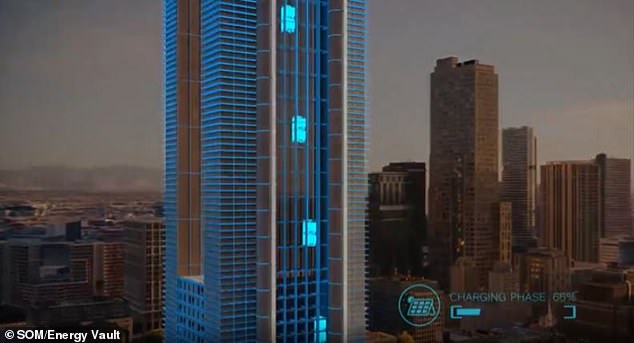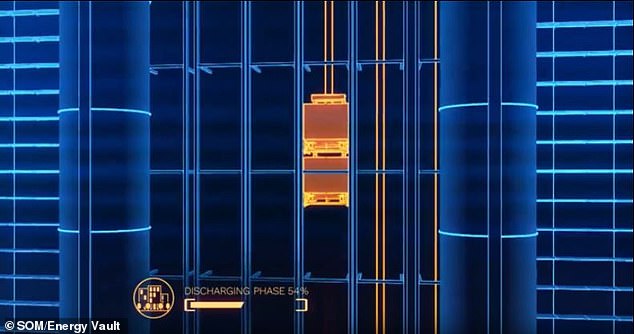Futuristic plans for world’s tallest skyscraper twice as high as One World Trade Center and designed to store power
Futuristic plans have been unveiled for the world’s tallest skyscraper, which will be twice as tall as One World Trade Center and designed to store energy.
Skidmore, Owings & Merrill (SOM), the architectural firm behind iconic structures including New York’s supertall building and Dubai’s Burj Khalifa, has partnered with energy storage company Energy Vault to design the renewable energy storage structures.
The duo aims to develop new solutions for gravitational energy storage. This mega-building could use an electrically powered motor to lift giant blocks into the air when demand for electricity is low.
These blocks would then store the electricity as ‘potential’ energy and could be stepped down as the city’s energy needs increased, converting the energy into electricity.
The giant tower would reach an incredible height of 1,000 metres – three times the height of The Shard – and would house residents and contain commercial space.
The supertower would reach an incredible height of 3,300ft – making it three times the size of The Shard – and would house residents and have commercial space

Skidmore, Owings & Merrill (SOM) and Energy Vault want to develop new solutions for gravitational energy storage. This mega-building could use an electric motor to lift giant blocks into the air when demand for electricity is low.

These blocks would then store the electricity as ‘potential’ energy and would be derated as the city’s energy needs increased – converting the energy into electricity
This setup can store enough energy to power multiple buildings with a capacity of several gigawatt hours.
The concept has already proven its worth thanks to the 150-meter-high energy storage megastructure in China, successfully built by Energy Vault.
The buildings would help the world successfully meet its net-zero targets for 2050. According to the International Energy Association, grid-connected technology that can store and distribute energy when needed needs to be expanded.
Storage is crucial for balancing generation and consumption, and a combination of technologies – from different forms of batteries to other energy storage methods – will likely be needed to increase capacity.
The two companies also want to explore the futuristic application of pumped storage hydropower in skyscrapers, possibly replacing the designed blocks with water.
This uses a turbine to pump water from a lower reservoir to a higher reservoir during off-peak hours.
As the demand for water increases, the water is passed through a turbine to generate electricity.
